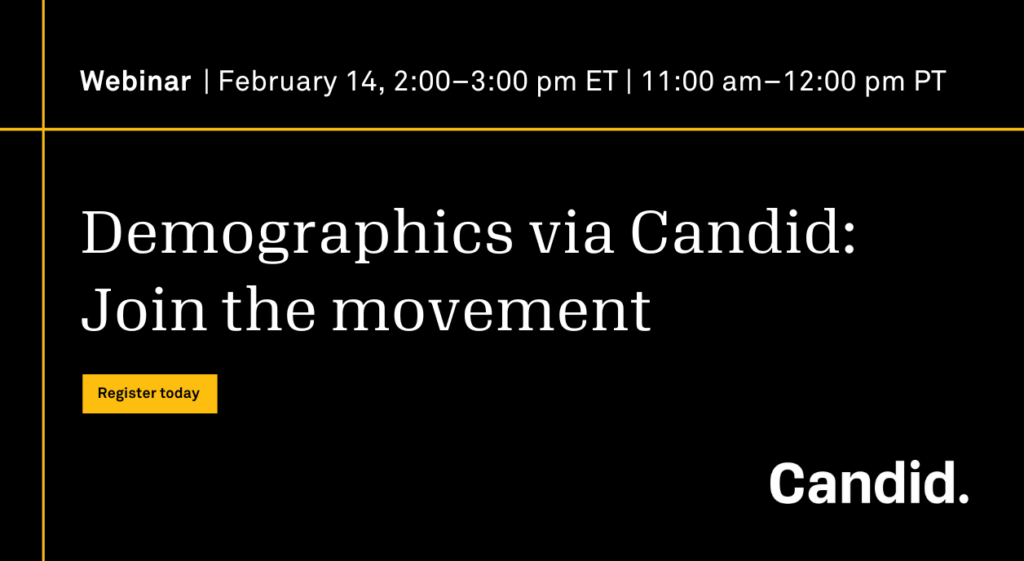Philanthropy’s Data Dilemma
 When McKinsey & Co. released its seminal study Big Data: The Next Frontier for Innovation, Competition, and Productivity, the firm confidently predicted that the world was “on the cusp of a tremendous wave of innovation, productivity, and growth, as well as new modes of competition and value capture — all driven by big data as consumers, companies, and economic sectors exploit its potential.” While the study covered every segment of the economy, from “accommodation and food” to “wholesale trade” and even government, philanthropy — an industry that, in America, controls over $600 billion in assets and makes close to $47 billion in grants every year — wasn’t even mentioned, most likely because no one thought to include philanthropy’s data.
When McKinsey & Co. released its seminal study Big Data: The Next Frontier for Innovation, Competition, and Productivity, the firm confidently predicted that the world was “on the cusp of a tremendous wave of innovation, productivity, and growth, as well as new modes of competition and value capture — all driven by big data as consumers, companies, and economic sectors exploit its potential.” While the study covered every segment of the economy, from “accommodation and food” to “wholesale trade” and even government, philanthropy — an industry that, in America, controls over $600 billion in assets and makes close to $47 billion in grants every year — wasn’t even mentioned, most likely because no one thought to include philanthropy’s data.

It’s not that philanthropy doesn’t have anything to bring to the Big Data party. Think about it. Foundations possess resources, something most people do not. And they possess something even fewer people have, flexible resources. As a consequence they are surrounded by those hoping for their support, an endless stream of the brightest and most committed talent on the planet, people with amazingly creative ideas about how to solve the world’s pressing social, economic, and environmental problems. But what’s visible to the outside world — the rare project that is actually approved and whose one-line description eventually makes it on to a foundation tax return and (maybe) a foundation Web site — is merely the tip of the iceberg. (And a surprising number of foundations don’t have web sites at all.) Moreover, most of the (increasingly digitized) concept notes, project proposals, progress reports, evaluations, research, and strategy deliberations produced by foundations are unavailable for mining within individual foundations, across the field, or by anyone else interested in understanding philanthropy’s immense contribution to making a better world.
When it comes to data, foundations have the defects of their virtues. They are endowed, independent institutions with the freedom to innovate, experiment, and stick with challenges for the long run. But their independence too often creates isolation: whatever data they do collect remains locked within thousands of knowledge silos. America’s foundations are changing, to be sure, but while many are still focused on catching up with the paradigm shift from giving money away to social investment, the next wave of change is already crashing over them. Either the philanthropic sector masters the technology of managing information and develops the habits of generating and sharing knowledge, or it risks being left behind. Yes, it will continue to do good in the world, but do we really want to settle for being, as Bart Simpson put it, an “underachiever and proud of it?”
That said, getting philanthropy to embrace the era of Big Data need not be a Herculean challenge. Technology is on our side, and by not doing some things we can free up time and resources to start doing others. Here is a partial list of what that might look like.
STOP trying to be unique
At a recent meeting of some of the largest staffed foundations in the country, I was struck by how many said they were developing their own taxonomies with which to classify the subjects of their grants, strategies, approaches, beneficiary populations, etc. Foundations don’t compete in the ways that most people think of competition, but they do seek to differentiate themselves from each other. In doing so, they tend to invent their own terminologies to describe and internally align what they do. As a result, philanthropy’s data is much more archipelago than sector, a vast sea of information islands, each with its own language. A colleague at the Foundation Center recently examined 160,000 grant records and identified 82 unique ways in which foundations describe “general operating support.” Not only has there got to be a better way, there is a better way. Read on.
START aligning your data with the outside world
While working for the Ford Foundation in the mid-’90s, I found myself arguing vociferously, during one of the quadrennial coding wars that the foundation seemed to engage in, against adopting the taxonomy and codes of the Foundation Center (where I now work). For the record, I repent. Before plunging headlong into developing expensive and elaborate data systems of their own, foundations should look at the systems in use by other foundations and sectors, particularly those with whom they seek to partner and leverage resources. This is beginning to occur. The Gates Foundation now reports grants to the Organization for Economic Cooperation and Development, the Hewlett Foundation converts its grants data into a format compatible with the International Aid Transparency Initiative, and the Ford Foundation has worked with Foundation Center staff to build a “crosswalk” between the two organizations’ taxonomies. If philanthropy is really serious about transformation, change, impact, making a difference, and all the other terms we use to distinguish it from traditional charity, then foundations need to align their data with each other and with the outside world.
STOP developing custom grants management systems
Historically, data in foundations has been related primarily to grants management — processing proposals, cutting checks, getting reports, and closing out files. A number of the large, traditional foundations invested considerable resources in developing their own custom grants management systems when there was little quality software to choose from. In the years since, commercial software has gotten much better and today 11 grants management software vendors have modules built into their products that make it possible for a foundation to export grants data directly to the Foundation Center. Those products include GIFTS, the market leader, and FLUXX, a new cloud-based open-source grants management solution. In the era of Big Data, “interoperability” is a key concept. Having your own unique taxonomy locked inside a custom software platform is two strikes against you.
START going beyond the 990-PF
Although philanthropy often seems like an impossibly diverse sector that ranges from the proverbial husband, wife, and a checkbook to the Gates Foundation with more than a thousand employees, all American foundations have one thing in common: they file a 990-PF tax return with the Internal Revenue Service. No foundation has ever proclaimed great love for the 990-PF and there have been various proposals for its reform. But because the 990-PF is a compliance document not a data collection instrument, the care with which it is filled out varies wildly, and several years can pass between when a foundation’s fiscal year closes and usable knowledge can be produced from it, philanthropy is a $600 billion industry that relies on two-year old trend data. In an effort to make more current information available, more than 700 foundations are now exporting their grants data directly to the Foundation Center on a monthly, quarterly, or yearly basis. And seven foundations — Mott, Hewlett, Kellogg, Rockefeller, MacArthur, Getty, and the Energy Foundation — are going a step further by publishing near-real-time grants data in machine readable format.
STOP treating data and communications as two separate things
Years ago, a program officer told me about how he had shocked the room when, after analyzing hundreds of grants, he informed his colleagues that the foundation was doing far less to help the poor than they thought. Back then, there was little concern that such an insight might leave the building and end up in the public domain. Today, in contrast, foundations work in a world where, one way or another, the data they have designed for internal purposes increasingly is made available to others and used to inform narratives that may be different from the carefully crafted ones foundations create themselves. To say this is reality doesn’t make it any easier. In general, philanthropy came late to communications, and foundations have labored to move beyond speech writing and to embrace strategic communications. Now, just as the messages are getting more sophisticated and soaring through cyberspace on the wings of social media, foundations will have to make sure their data supports their stories, and vice versa.
START thinking about your data as open
By and large, foundations tend to think of open data and transparency as something they should fund rather than do. There are a growing number of foundation efforts to make government more transparent, create information-driven social capital marketplaces, and so on, but little effort is being made to liberate foundation data itself. For years, the Foundation Center has been painstakingly capturing data from foundation tax returns, cleaning it, standardizing it, and producing reports and (more recently) data visualizations. It is only a matter of time, however, before those tax returns are available online in digital form, making it easier than ever for anyone to grab the data and mash it up however they choose. Even today, there is nothing to prevent industrious data miners from scraping foundation data directly from your Web site.
The time has come for foundations to start thinking about everything they do as data. This post has understandably focused on grants data, the principal “output” of foundation activity. But as I noted at the outset, foundations are sitting on vast stores of information that go far beyond grants data and are potentially of equal or greater value. As file cabinets disappear from foundation hallways and all that information migrates to hard drives and the cloud, philanthropy has an incredible opportunity to answer the question a young philanthropist recently posed to me: “How can we know what other foundations know?” If, and only if, foundations are willing to create the habits and systems needed to more freely share their information with each other and with others will the industry that is philanthropy fully be able to take advantage of the era of Big Data and all that it promises.






